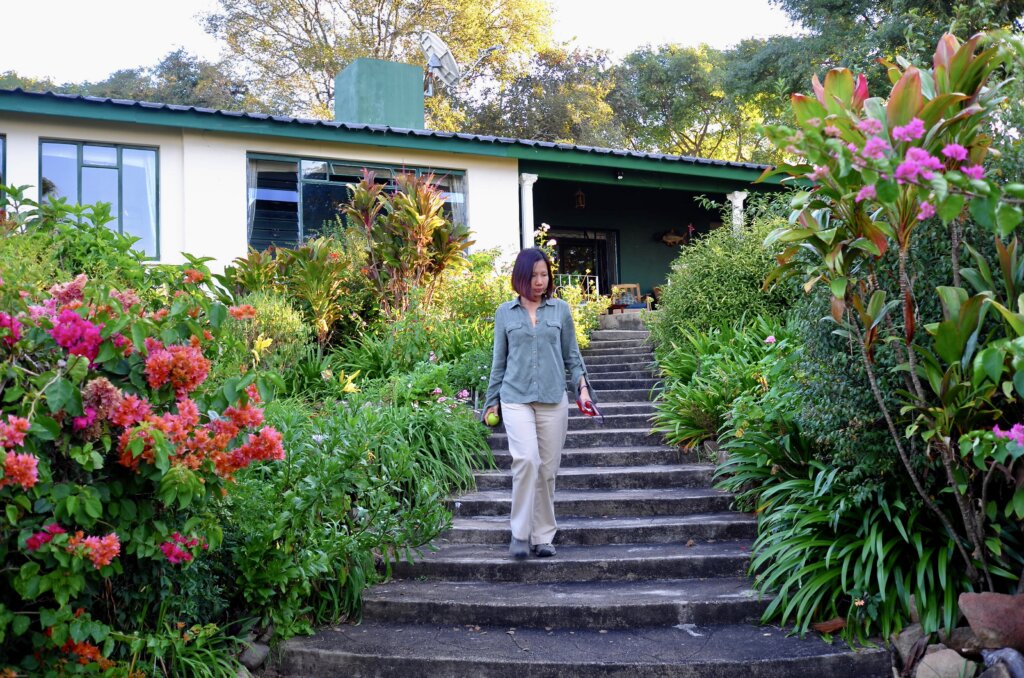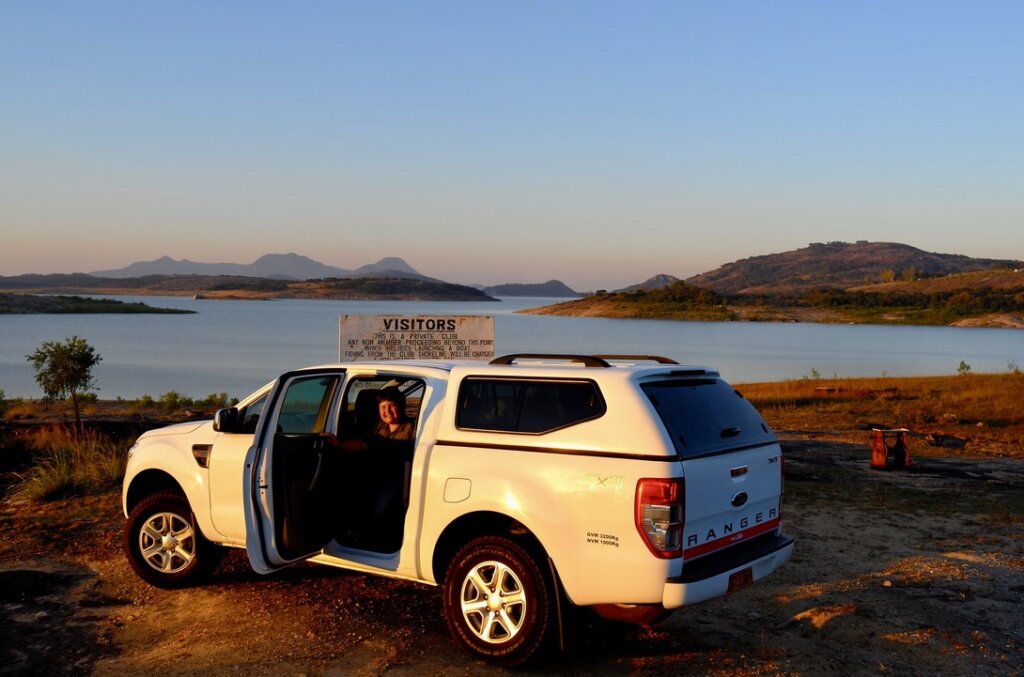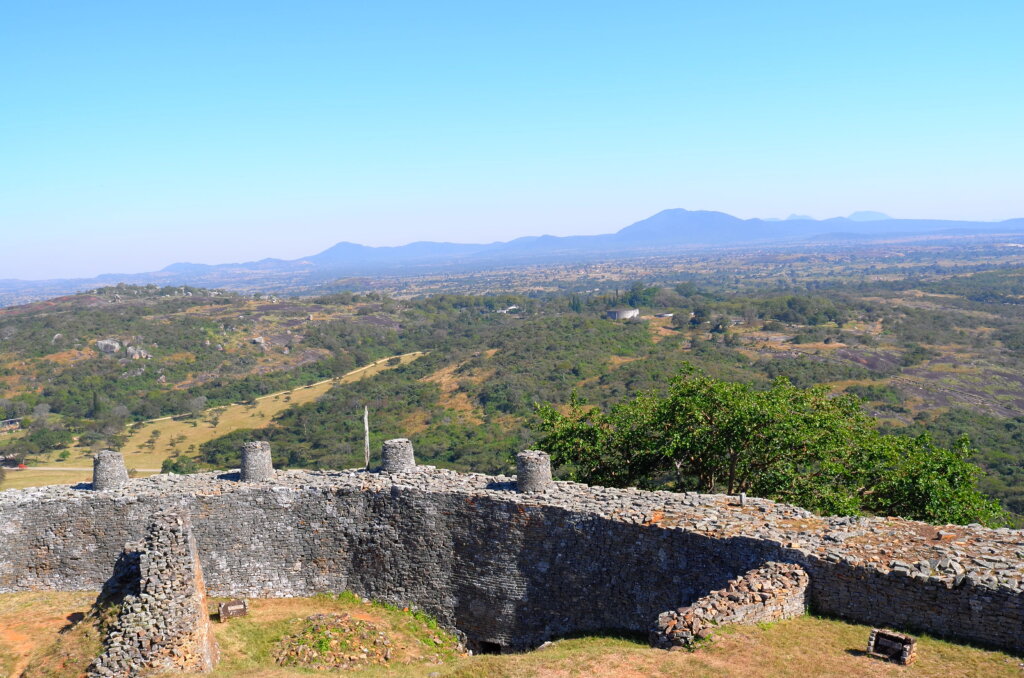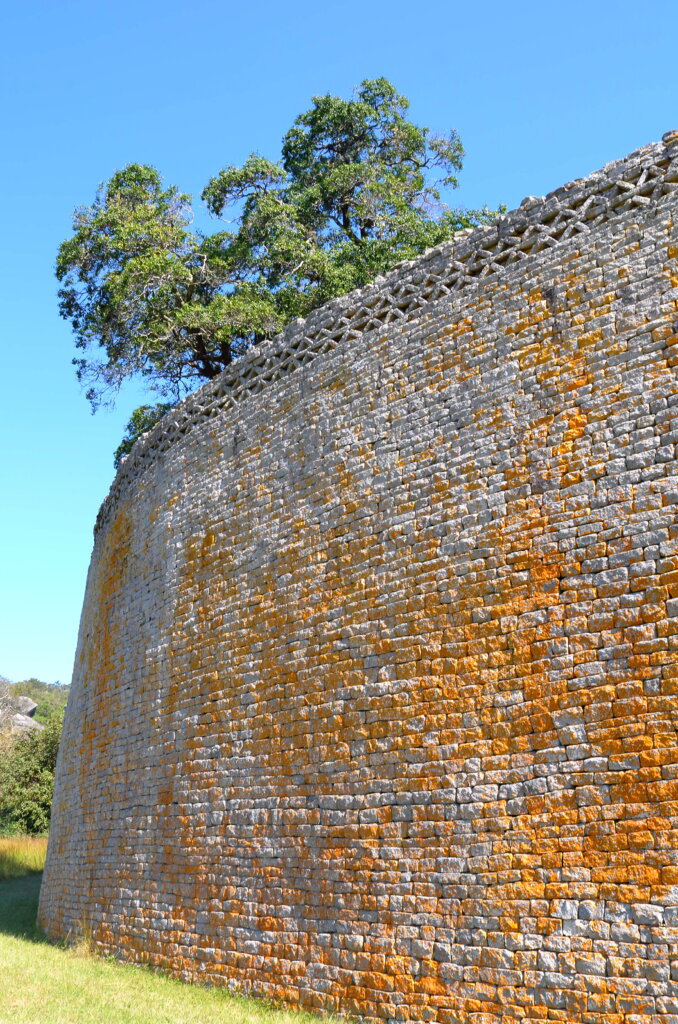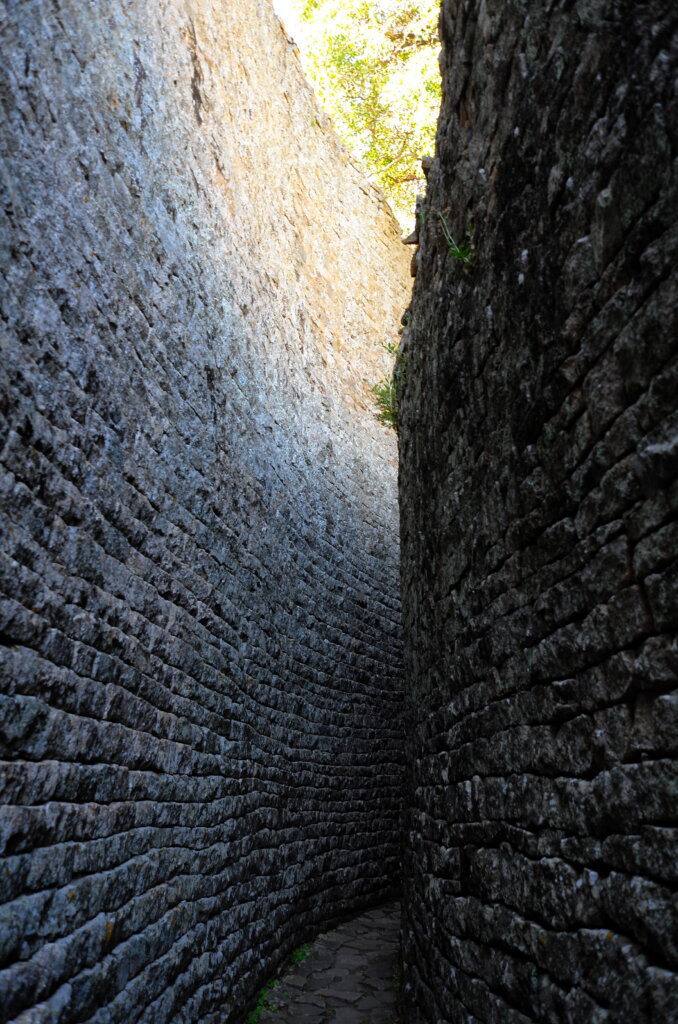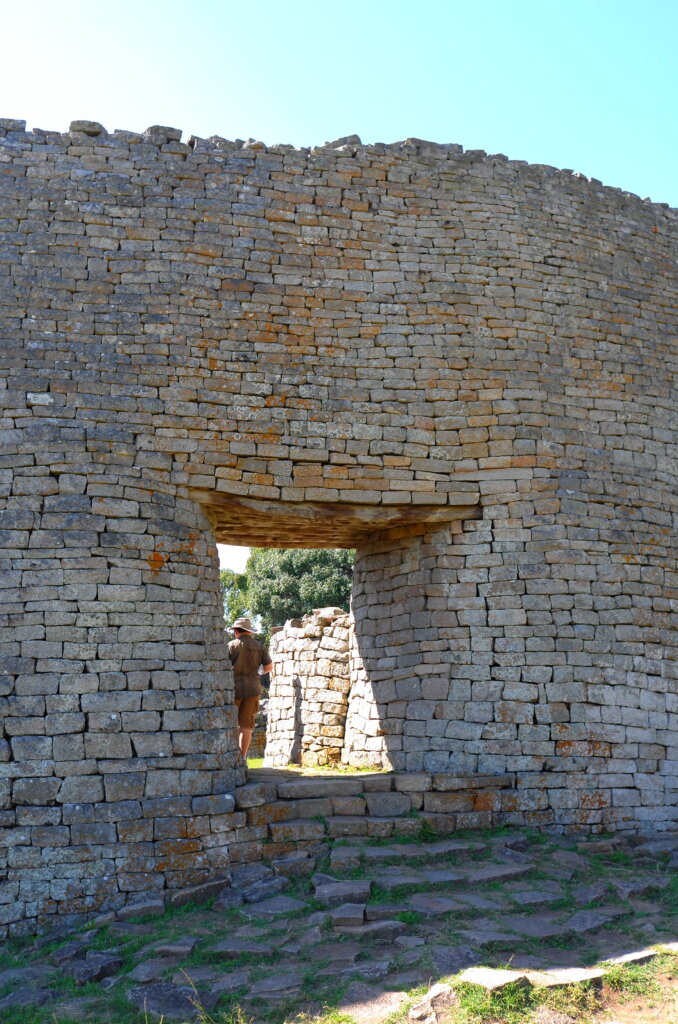300km south of Harare, lie the ruins of Great Zimbabwe, a great African city which for 400 years, between the 12th and 16th centuries CE ruled an empire which included most of present day Zimbabwe and parts of South Africa and Mozambique. Great Zimbabwe traded with the Arabs, the Chinese and the Indians, its great wealth based on the alluvial gold found all around it. By the 1500’s, the city had exhausted its agricultural resources and had to move, starting a slow decline of the kingdom.
The design and architectural features of Great Zimbabwe are so sophisticated that the early European explorers who discovered it were convinced it could not have been built by “primitive” Africans. In the early 20th century, exotic theories to explain its origins abounded. Perhaps it was the Phoenicians ? Or Egyptians ? Or even the Queen of Sheba, fabulously wealthy thanks to Great Zimbabwe’s gold ?
It has now been proven that Great Zimbabwe was indeed built by native Africans, Bantus from the Niger Delta region, and the forebears of today’s Shona. But the myths did not go away so easily, and under Ian Smith’s white minority government, before independence, it was a punishable offense to claim that Great Zimbabwe was designed and built by Africans. Perhaps that helps to explain why Southern Rhodesia’s name was quickly changed to Zimbabwe after independence.
Great Zimbabwe is an impressive site, covering over 700ha, surrounded by empty countryside. Intricate brick constructions blend in seamlessly with the surrounding boulders. Massive buildings are built using bricks stacked up without making use of mortar. A narrow corridor leading to the Royal Enclosure, framed between 11m walls whose function remains a mystery continues to puzzle scholars.
